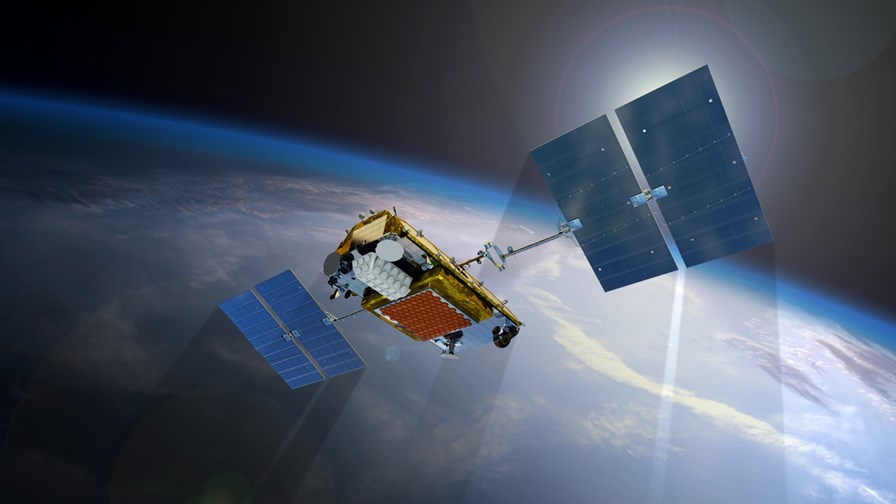
© Iridium
- Test of LoRaWAN backhaul communications over Iridium
- Constellation of 66 LEO satellites covering the globe
- Stream Technologies considering its use for “pop-up” networks
Progressive IoT platform provider Stream Technologies and the LoRa Alliance may just have given satellite service Iridium one more chance to play a significant role in connecting the world. It has announced the successful demonstration of LoRaWAN backhaul communications for IoT devices via satellite.
Those of you unfortunate enough to have followed my writing for the past twenty years and more may recall my robust attack on the low-Earth orbit (LEO) satellite business models that were all the rage in the 1990s. I wasn’t convinced by them, and neither, it turned out, was the market. Iridium, Globalstar, Odyssey, et al. They were all products of outdated thinking. Whilst the satellite industry was plodding its way and investing billions in its view of global connectivity, GSM was proving that you didn’t have to leave the ground. GSM’s rapid evolution from a pan-European standard to the global dominating force it has become today is well documented. The LEO firms went bust, and those that managed to make it into orbit struggled with successive business models to find a role – they mainly succeeded by providing support to spy networks and remotely based industries such as oil exploration.
Data versions of the LEOs emerged around the end of the 90s, aiming to bring Internet access to remote areas of the word. But despite huge commercial backing for the likes of Teledesic, they too floundered and failed.
Today though, the pressing global connectivity need appears to be the IoT. This is a sector that the cellular industry and still not managed to take control of, and is largely the domain of disparate networks, mainly low-power WANs.
A new chapter for LEOs?
Enter the LoRa Alliance. At a meeting of the Alliance in the Netherlands this week, Stream Technologies and Global Satellite Engineering conducted a demonstration of low power LoRaWAN backhaul communications over the Iridium network. By using the LEO satellite network to backhaul LoRa capabilities, Stream says customers will be able to deploy “pop-up networks” in remote locations, taking full advantage of the flexibility provided by both technologies.
“This opens up great possibilities for using LoRa networks where cellular coverage is not available, and where using multiple satellite end points is not cost effective,” said Alan Tait, CTO at Stream Technologies. “We are excited to be able to leverage the Iridium network to enable LoRa networks everywhere, opening up new opportunities for the M2M and Internet of Things industries.”
The Iridium network is a global, mobile satellite constellation comprised of 66 LEO satellites, enabling coverage spanning the globe, including the poles. It believes its mesh architecture will deliver reliable, near real-time communications for a wide range of M2M solutions and markets.
“We are excited that Stream Technologies and GSE are able to demonstrate the power that Iridium can bring to the Internet of Things by extending LoRa based networks anywhere on the planet,” said Tim Last, VP and GM, M2M line of business at Iridium. “Together with our partners, we can enable low-cost global IoT networking across 100 per cent of the globe.”
A bold claim indeed. Yes, the constellation’s coverage no doubt does cover the planet, but how much, exactly, is “low cost”? And does Iridium have the same trust level that is enjoyed by cellular operators? After all, many owners of IoT deployments appear to like the concept of single billing from a major cellular service provider, bundling finance and management of all their communications in one place. Will the Iridium prospect entice them to think otherwise? Or will Iridium become a niche alternative for “pop-up networks”, restricted only to those hard-to-reach locations?
Footnote: A brief history of Iridium
The ambitious LEO idea was first conceived by Motorola engineers in 1987, although it was 1993 before the $3.7bn venture took flight. A constellation of 77 satellites would criss-cross the earth to provide global mobile voice communications. It was named after the element Iridium, which has 77 orbiting electrons. Not such an appropriate name when the design changed to 66 satellites. Iridium launched its fleet in 1997 and began operation in 1998. By then, GSM had already become the de facto global system for mobile, and who wants to pay $3,000 for a satellite phone anyway? Iridium filed for bankruptcy protection in 1999. Its global domination plans in tatters, and most of its huge investment costs written off, it now enjoys a more sedate existence. The new Iridium currently has around 780,000 subscribers, and is starting to see growth in M2M markets.
"While our commercial service revenues are being impacted by a strong U.S. dollar and weakness in the energy sector, we are benefitting from strength in government services and continued growth in M2M data services,” said Matt Desch, CEO of Iridium. A plan to launch a series of new broadband satellites, Iridium NEXT, has been pushed back to a provisional launch in April next year with an operational service in 2017.
Email Newsletters
Sign up to receive TelecomTV's top news and videos, plus exclusive subscriber-only content direct to your inbox.




